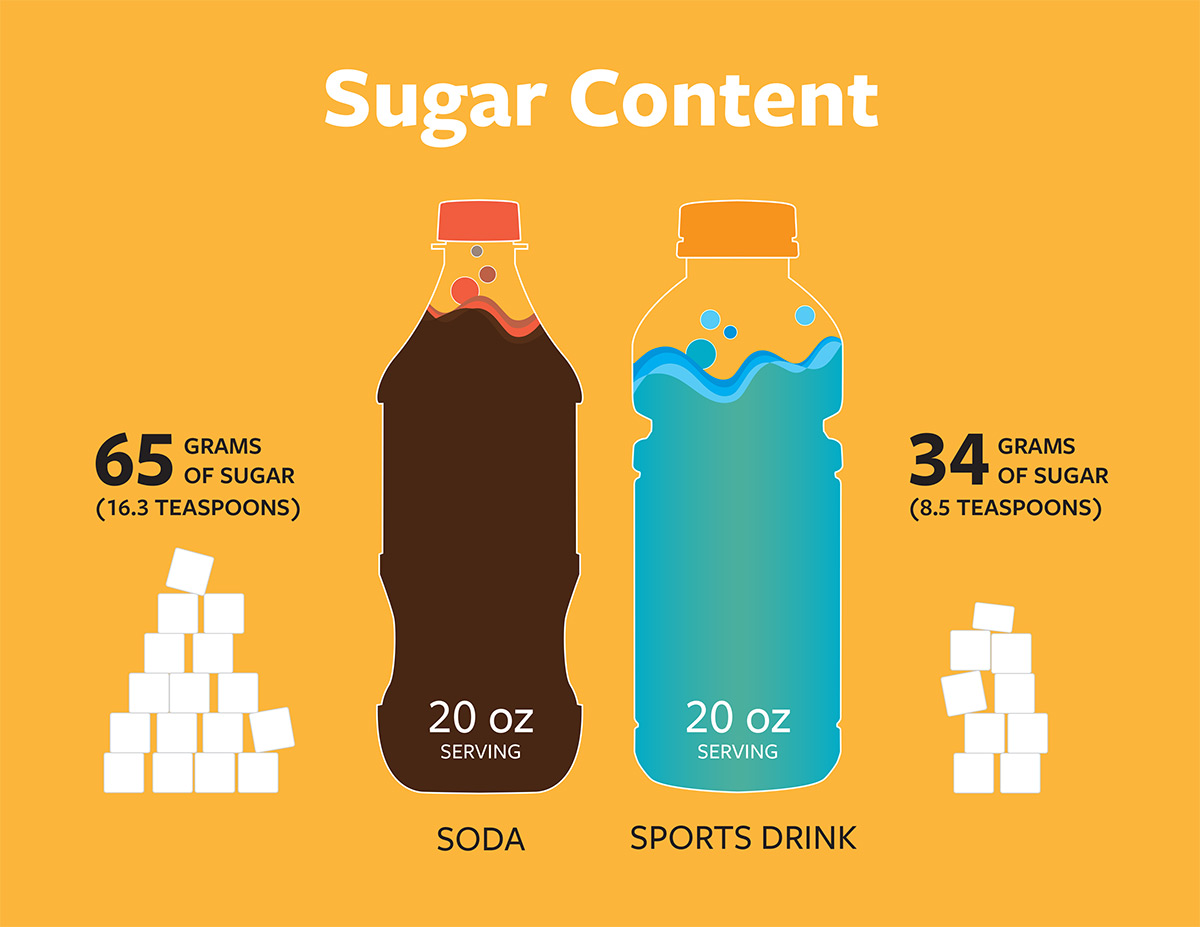Sugar in sports drinks
Skipping the soda and reaching for popular sports drinks may seem like a healthy choice, but most sports drinks are only slightly better than soda in terms of sugar and calories. A 32-ounce sports drink contains between 56 and 76 grams of sugar – equal to about 14 to19 teaspoons – and four to six times the recommended daily amount for kids and teenagers.
“They do have less sugar than soda, but it’s still a significant amount,” says Vanessa Curtis, MD, a pediatric endocrinologist and director of the pediatric cardio-metabolic clinic at University of Iowa Stead Health Care Family Children’s Hospital. “Most sports drinks still have about two-thirds as much sugar as soda.”
The same amount of a non-diet soda contains 104 to124 grams of sugar, or 26 to 31 teaspoons.

The number of teens reaching for sugary sports drinks weekly is going up, and even more so daily when it comes to kids who watch more than two hours of TV a day, according to a study posted in May 2018 in the American Academy of Pediatrics (AAP). Nearly 60 percent of high school students drink at least one sports drink each week.
Dr. Curtis says the added electrolytes that come from these sports drinks aren’t necessary for kids, either.
“Kids don’t really need the extra electrolytes if they’re eating a healthy diet,” she says. “If they’re running a marathon, then the drinks are fine – but for one ball game or a dance recital? They don’t need them.”
The AAP study identifies sports drinks as “electrolyte- and carbohydrate-containing soft drinks, often flavored and sugar sweetened, advertised to restore energy and fluids in strenuous exercise.” The authors say the drinks are good for elite athletes involved in prolonged vigorous activity, but that “prepubescent youth do not lose electrolytes at the same rate as adult athletes.”
They also add unnecessary calories, Curtis says, and can lead to – or contribute to – obesity and diabetes.
“We don’t want to be giving kids unnecessary calories, especially since 1 in 6 kids in Iowa are obese,” Curtis says.
Serving size plays a deceptive role in the consumption of sports drinks, as well, she says.
“If you read the bottle, a serving size of a sports drink is 8 ounces, but the bottles most kids are drinking are 20- or 32-ounce bottles, which are three to four servings at once,” Curtis says.
In most circumstances the best alternative at the ballpark or the soccer field, she says, is simply water.
“Water should be the first choice for rehydration for most activity,” she said. “That’s really all they need.”